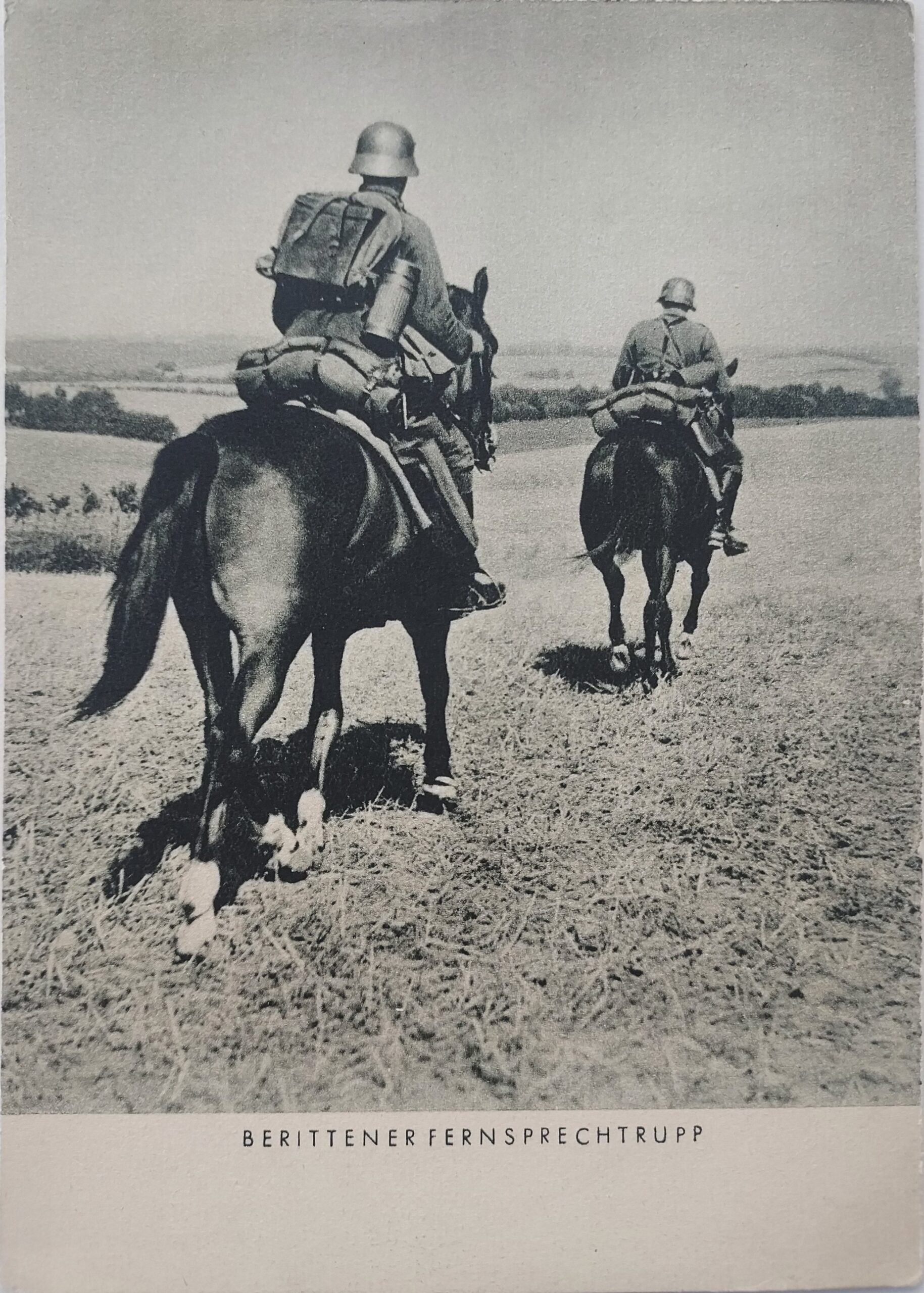Accession Number: 2022.02.11.5.49
Stamp: 1936 Otto von Bismarck, Deutsches Reich, 6 Pfennig (dark green)
Historical background:
Contrary to the popular image of Nazi Germany as a highly mechanized, front of technologically advanced military power, horses served as a huge proportion of Germany’s motive power. The majority of horses were used for supply and communication. The Wehrmacht did keep a calvary, but to a small extent; throughout the war, cavalry numbers ranged between one and six brigades. The reliance on horses proved a logistical struggle; each day, war horses consumed 53 tons of food. The army was so reliant on these horses that starving German soldiers were tried for stealing feed oats. The horses suffered in the cold, requiring additional resources to keep them alive through the winter. They died on the battlefield in numbers up to 1,000 each day. Nazi propaganda efforts intentionally downplayed the role of horses in order to maintain the public perception of Nazi troops as a mechanized blitzkrieg.
Sources
German horse cavalry and transport. Intelligence Bulletin, March 1946.
McFarland, K. V. (2021). Warhorses Amongst War Machines: The German Army’s Use of Horses and Cavalry During World War II. Senior Theses. 405.
Perry, J. (2014). Horses & The Mechanized Myth of the Eastern Front. Military Heritage, 15(6).


